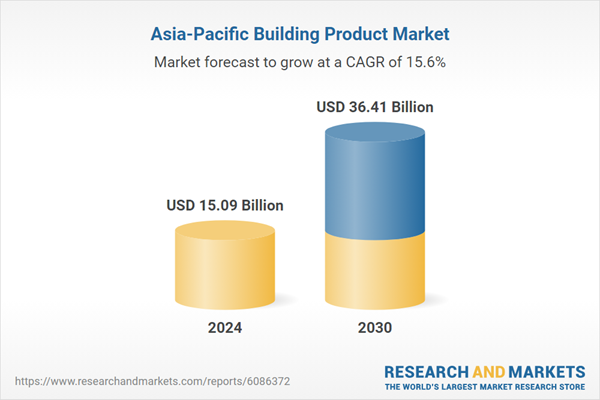Speak directly to the analyst to clarify any post sales queries you may have.
10% Free customizationThis report comes with 10% free customization, enabling you to add data that meets your specific business needs.
Key Market Drivers
Rapid Urbanization and Rising Housing Demand
Urbanization in Asia-Pacific is accelerating at an unprecedented pace, driven by the migration of rural populations to cities in pursuit of better livelihood opportunities. This shift is increasing the strain on existing housing infrastructure and creating urgent demand for new residential developments. In response, governments and private sector developers are initiating large-scale housing projects, townships, and urban development schemes across major economies such as China, India, Indonesia, and Vietnam. This surge in housing construction is significantly boosting the consumption of various building products ranging from structural materials to energy-efficient components, reinforcing the market’s upward trajectory.Key Market Challenges
Volatility in Raw Material Prices
The Asia-Pacific building product market faces challenges due to fluctuations in prices of essential raw materials such as steel, cement, aluminum, and timber. These variances are driven by global economic trends, trade dynamics, and geopolitical events that can disrupt supply chains and lead to cost spikes. For manufacturers and contractors, such unpredictability complicates budgeting and procurement planning. Smaller firms, in particular, may find it difficult to absorb increased input costs or pass them onto customers, potentially affecting competitiveness and project execution. This financial pressure can result in delays, reduced margins, or even project cancellations. To address these issues, market players are exploring strategies like supply diversification, localized manufacturing, and alternative materials - though such measures often require additional investment and time.Key Market Trends
Modular and Prefabricated Construction
The adoption of modular and prefabricated construction techniques is on the rise across Asia-Pacific, driven by the need for speed, efficiency, and cost control in urban projects. These methods involve off-site manufacturing of building components, which are then assembled on-site, significantly reducing construction timelines and labor requirements. Modular construction is gaining popularity for residential, commercial, and institutional projects, especially in space-constrained cities. The trend also supports design flexibility and scalability. As this approach grows in acceptance, demand for standardized and precision-engineered building materials that support prefabrication is increasing, reshaping procurement and construction practices across the region.Key Players Profiled in this Asia-Pacific Building Product Market Report
- GAF Materials LLC
- Nippon Steel Corporation
- Knauf Group
- DuPont de Nemours, Inc.
- Holcim Group
- BASF SE
- Rockwool International
- USG Corporation
- ArcelorMittal
- Sika AG
Report Scope:
In this report, the Asia-Pacific Building Product Market has been segmented into the following categories, in addition to the industry trends which have also been detailed below:Asia-Pacific Building Product Market, by Type:
- Aggregates
- Bricks
- Cement
- Others
Asia-Pacific Building Product Market, by Application:
- Residential
- Commercial
- Industrial
Asia-Pacific Building Product Market, by Country:
- China
- Japan
- India
- South Korea
- Australia
- Singapore
- Thailand
- Malaysia
Competitive Landscape
Company Profiles: Detailed analysis of the major companies present in the Asia-Pacific Building Product Market.Available Customizations:
With the given market data, the publisher offers customizations according to a company's specific needs. The following customization options are available for the report.Company Information
- Detailed analysis and profiling of additional market players (up to five).
This product will be delivered within 1-3 business days.
Table of Contents
Companies Mentioned
The leading companies profiled in this Asia-Pacific Building Product market report include:- GAF Materials LLC
- Nippon Steel Corporation
- Knauf Group
- DuPont de Nemours, Inc.,
- Holcim Group
- BASF SE
- Rockwool International
- USG Corporation
- ArcelorMittal
- Sika AG
Table Information
| Report Attribute | Details |
|---|---|
| No. of Pages | 120 |
| Published | May 2025 |
| Forecast Period | 2024 - 2030 |
| Estimated Market Value ( USD | $ 15.09 Billion |
| Forecasted Market Value ( USD | $ 36.41 Billion |
| Compound Annual Growth Rate | 15.6% |
| Regions Covered | Asia Pacific |
| No. of Companies Mentioned | 11 |









